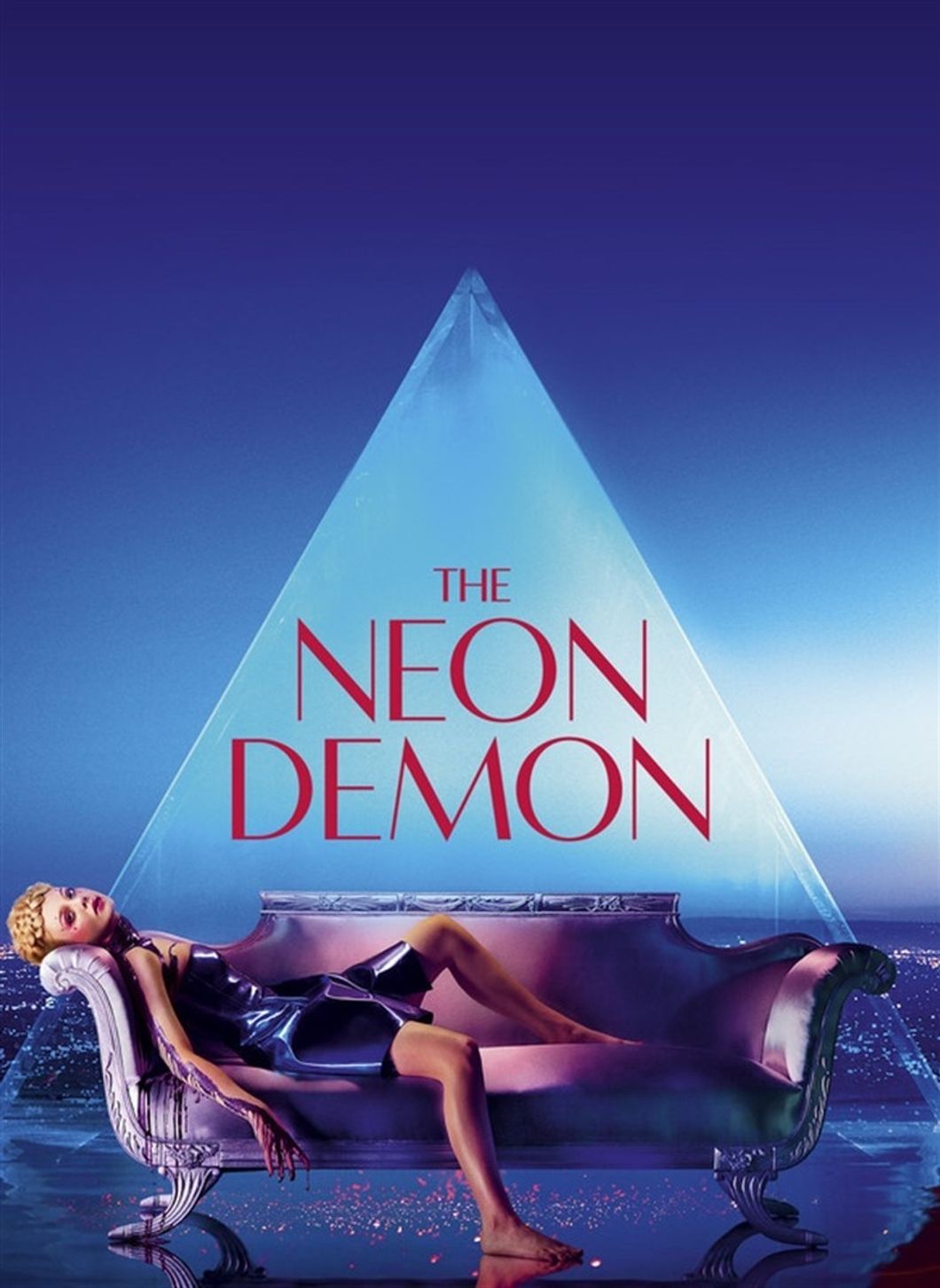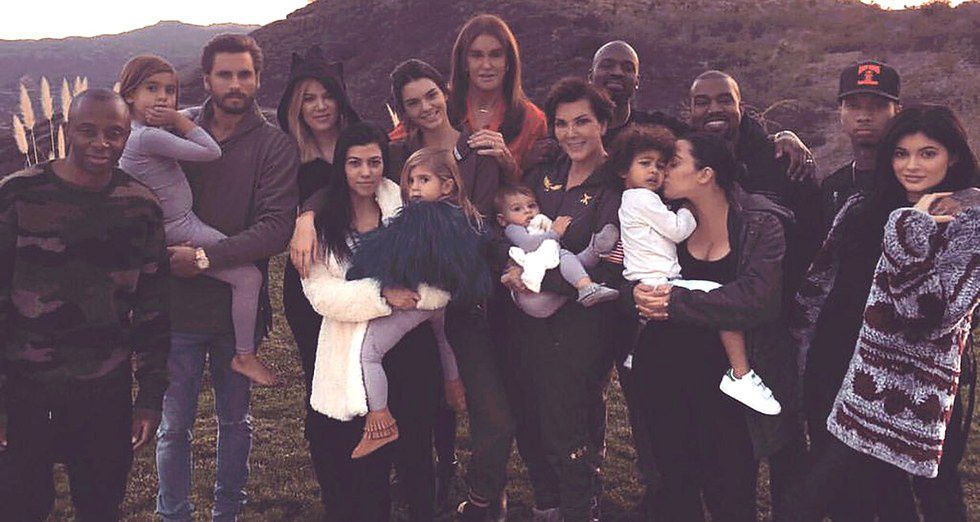"The Neon Demon" was a hauntingly hypnotic psychological horror film that portrays the significance of beauty in today's generation. Nicolas Winding Refn uses uniquely styled, yet polarizing cinematography to tell the story of a young and innocent girl named Jesse (Elle Fanning) that moves to Los Angeles in attempt to launch her modeling career. She faces numerous obstacles, including jealous rivals, creepy photographers, and an insolent motel manager. The film takes a sharp turn of events when Jesse begins to allow her success in the fashion industry to get to her head, leading to her inevitable downfall in getting devoured by the beauty-obsessed rivals in the end. This brief plot summary only scratches the surface of this incredibly complex and symbolic movie.
The beginning scene
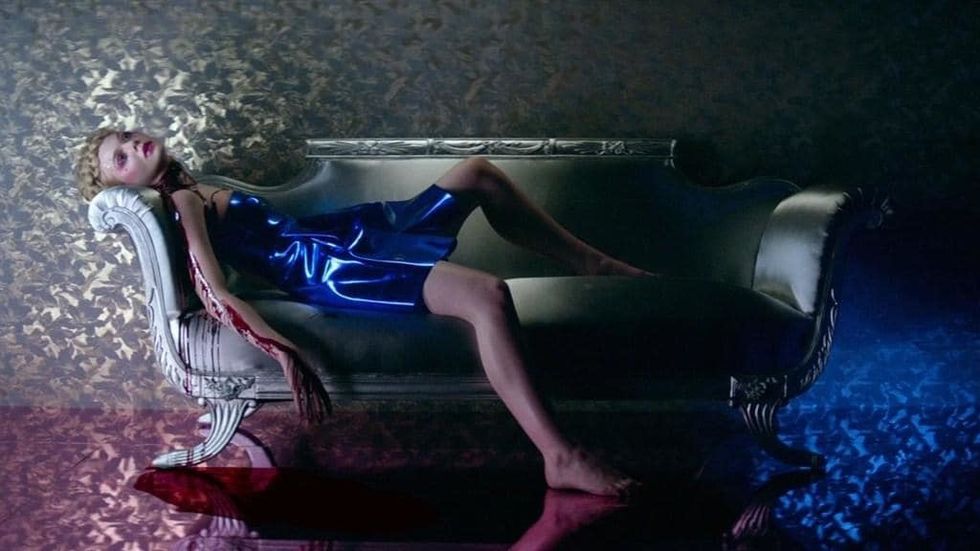
The opening scene is arguably the most important scene in the entire film being that it foreshadows the gruesome ending, giving the audience a slight glimpse at what is to come. The blood covered model laying lifeless on the sofa provides an intriguing hook to keep the audience consistently begging the question of what is real, and what is just for the cameras.
The characters and what they represent
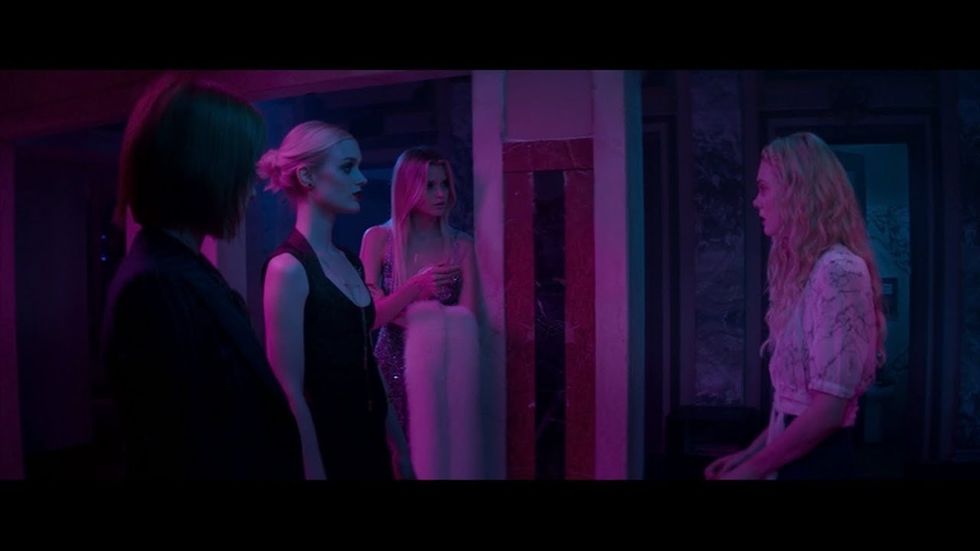
https://www.youtube.com/watch?v=vSibD7qcnDg
Jesse quite obviously represents natural beauty, innocence, and perfection (or at least the rest of the character's definition of perfection).
Each of the three girls represents a different aspect of beauty. Sarah (Abbey Lee) represents external beauty, but still falls short at the extent of Jesse's beauty, portraying the longing of never being beautiful enough. Gigi (Bella Heathcoate) represents artificial beauty as the amount of surgeries she has undergone is mentioned many times throughout the movie in order to maintain her splendor. Ruby (Jena Malone) is the lesbian makeup artist that is used to reveal the sexual aspect of beauty, and what happens to women in the modeling industry when they don't give in. This was foreshadowed in the very beginning of the movie when the four girls are in the bathroom of the nightclub and ruby states that most lipsticks are named after sex or food, and then proceeds to ask Jesse which one she is.
There purposefully are not any male leads in this film in order to set the focus entirely on the women, since that is what this movie really is all about. The boyfriend Dean (Karl Glusman) is used to represent normalcy in close comparison to all the chaos that ensues. The motel manager, Hank (Keanu Reeves) represents a stereotypical sexual predator that adds emphases to the fact that Jesse is always looked at like a piece of meat given her outward appearance. It also adds irony to the audiences initial assumption that he is going to be the main antagonist to the film that will lead to Jesse's demise, when in reality it ends up being who you least expected it to be.
The mountain lion
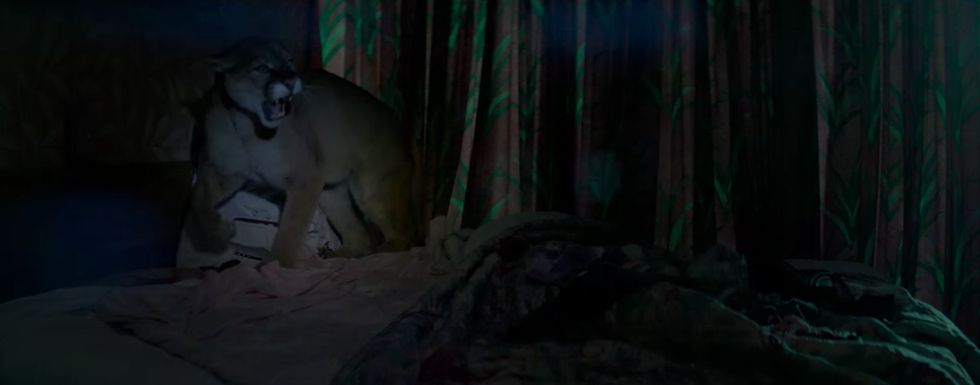
https://www.slashfilm.com/the-neon-demon-ending-questions/
After the mountain lion is found in her room, Hank (Keanu Reaves) is quick to place the blame on Jesse for leaving the patio door open. I felt that this scene was really just a metaphor for the fact that Jesse unknowingly "left the door open" to the predators that will soon attack her in real life.
The morgue scene
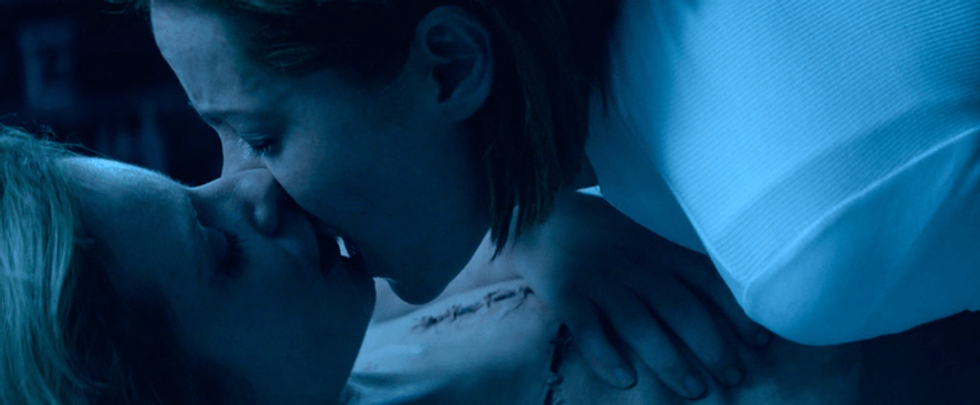
https://vigilantcitizen.com/moviesandtv/neon-demon-reveals-true-face-occult-elite/
After Ruby is rejected by Jesse, she partakes in lesbian necrophilia with one of the corpses in the morgue. This scene was very uncomfortable to watch, which was entirely the point. It depicts the sexual tension that comes along with loneliness and extent at which Ruby was willing to go to receive both love and affection. At the same time, this scene is also a representation of parallelism to the events that just happened with Jesse. It is clear that the feelings that Ruby has for her are entirely one-sided, much like it is for the corpse.
The title

https://thinkchristian.reframemedia.com/the-neon-demon-shining-a-strobe-light-on-narcissism
Much like the title of the film suggests, the first half of the movie (Neon) is bright and tantalizing, representing Jesse's youthfulness and innocent dreams of making it big in the fashion industry. This is also the facade of how life in the fashion industry appears to the rest of the world. The film takes a sharp turn of events in the second half (Demon) after Jesse becomes more self aware of her beauty and falls in love with her appearance, which now makes her dangerous. The second half portrays the dark ritualistic reality of what this life style really consists of. The film also reveals what its like to be born a beautiful woman and how beauty does not come without a cost (neither does narcissism).
The ending
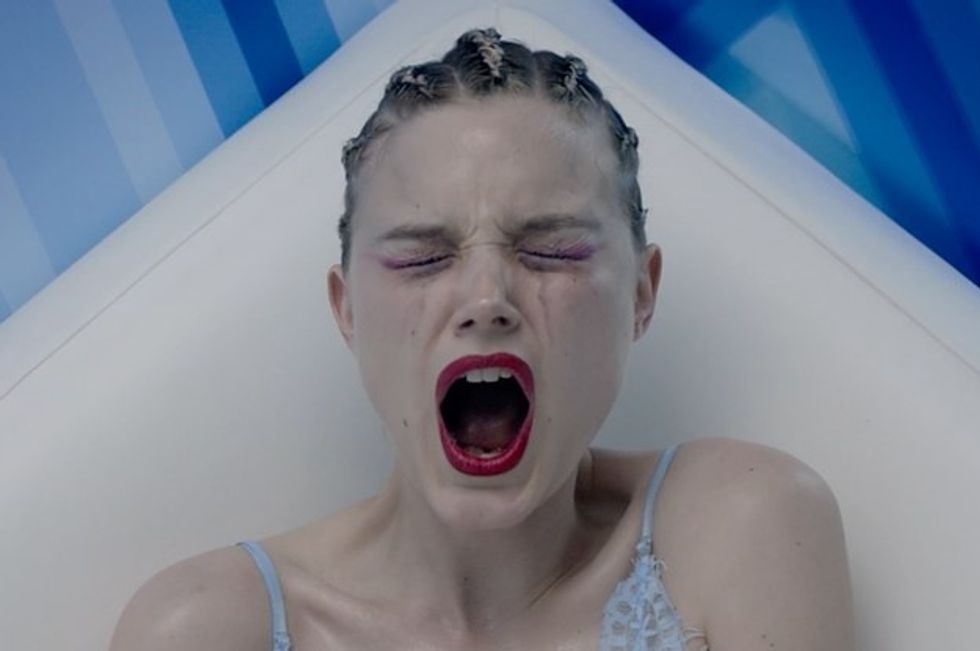
https://www.buzzfeed.com/jarettwieselman/inside-the-years-most-shocking-movie-ending
Nicolas Winding Refn said in multiple interviews that his style of cinematography as an art form is entirely based on the reaction of the audience. As your sitting there watching the ending of the film as the three women kill Jesse and resort to cannibalism, you can't help but think "These girls are crazy! How could they think that by somehow eating her, they are going to become any more beautiful?" and this was entirely the main point that Refn was attempting to reveal about the delusion that most women unfortunately have in this generation: they believe that by tearing other women down, they are somehow bringing themselves up when in reality, doing so only hurts themselves. This is why they included the scene where one of the girls appears to be having intense contractions and can't handle the pain and guilt of Jesse being inside of her and stabs herself in the stomach. It's kind of like that old saying that blowing out someone else's flame doesn't make yours shine any brighter.
Criticism
Personally I loved the artistic craft behind this film and felt that it was entirely underrated in terms of reaching a vast audience. My only criticism would be that some of the areas in the plot didn't quit make sense logically in the progression of the story. For example, it wasn't explained very well what reason Jesse had to dress up and put makeup on during the end. Because of the complexity of the movie its easy to ignore small plot holes assuming it had to have held some kind of deeper meaning but the question will always remain: what was intentional, and what was just for the cameras?

